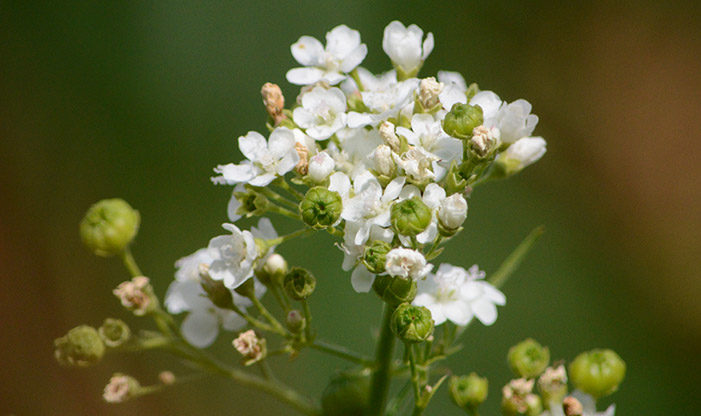Our conservation team recently launched the Rare Plant Monitoring Project to search the Schlitz Audubon property for rare native plants and plants of special concern. This project will document the presence and abundance of 33 threatened native plant species that have been found in previous surveys dating back to as early as 1975. An additional, exciting aspect of this effort is the possibility of finding rare plants that weren’t previously recorded on the property
The Rare Plant Monitoring Project is possible thanks to generous grant funding from the Rare Plant Preservation Fund, made through the Natural Resources Foundation of Wisconsin. This grant allows us to focus on this project and purchase necessary equipment—such as field guides, hand lenses, and an electronic tablet. This summer, our land management team began the first phase of the project. Later, trained volunteers skilled in plant identification will be brought onboard to help.
Surveying Rare Plants
The rare plants of interest include species of wildflowers, trees, and shrubs. Early findings were recorded on a graph detailing their location in a particular area of the property. In later years, we also used GPS systems, which pinpoint plants within a range of 12 feet. For this year’s monitoring, when plant species of interest are located, the team will use sub meter-GPS units that pair with a phone via Bluetooth and are accurate within 1-2 feet. This way of loading the coordinates is much more precise. Plants are surveyed when they are flowering and are plotted on a timeline by month, helping the team keep track of where and when they are growing.
To find these rare plants, we are returning to the locations where the species were originally recorded. In addition, the team is surveying areas of the property with similar environmental conditions to previously documented plants and those that meet the habitat requirements for species of interest.
The next project phase includes collecting seeds from the species the team finds. If only a single plant is found, the team won’t collect seeds to protect the plant. If the plant is part of a sizable population, they will collect seeds from less than 25% of the plants, maintaining the health of the original population. The team will spread the collected seeds in appropriate locations on the property to help propagate the species. If done correctly, this will establish new, stronger populations.
Importance of the Survey
Monitoring and documenting the rare plants that are a part of this survey has many benefits for the Center. It enriches our educational programming, allowing naturalists to talk about why plants and animals are endangered, enhancing the visitor experience. It also helps to preserve threatened species on our property while increasing biotic diversity and a varied landscape of flora.
Our data will also be shared with the Wisconsin DNR, to help enhance their understanding of which threatened species are growing at the Center and in the greater Milwaukee community. This will assist the Wisconsin’s Natural Heritage Inventory (NHI) Program In tracking rare species in the state and may help determine which species merit being on the NHI Working List. Through our data collection, we are increasing statewide knowledge to conserve some of Wisconsin’s most imperiled species, and encouraging citizens to explore, care for, and protect our state’s natural resources.


